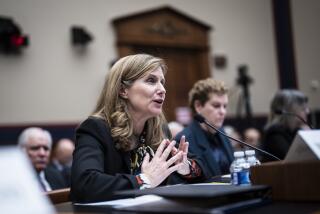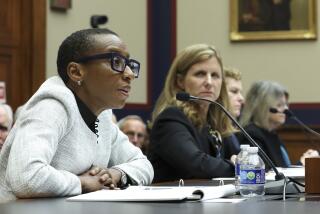Colleges’ misguided plan for drinking
Awell-intentioned but misguided group of college and university presidents has been in the news recently for suggesting that we revisit the drinking age and asserting that 21 “is not working.” Called the Amethyst Initiative, their proposal would have received a failing grade in my sociology classroom for its faulty logic and how unmindful it is of the history of alcohol policy in this country.
During the 1960s and 1970s, most states lowered the drinking age from 21 to 18 or 19. Arguments about the draft were cited -- “old enough to fight, but not to drink” -- and in the general liberal climate of those times, good policy gave way to popular sentiment.
The 128 college presidents who have signed on to the Amethyst Initiative apparently are unaware of the extensive research that documented the decade of carnage that followed -- not just on our highways but in our bars, streets and neighborhoods. Rates of alcohol-related traffic deaths soared. Rates of alcohol-related violence among those 18 to 20 increased. And as alcohol got more accessible to teens, more 12- and 13-year-olds started drinking.
Beginning in the late 1970s, the states, led by Minnesota, restored the drinking age to 21, and they saw corresponding drops in alcohol-related car accidents and crash-related deaths. There also eventually were reductions in youth homicide, which resulted in part from the decreased access to alcohol, both within the 18- to 20-year-old group and those under 18.
The college presidents claim that research does not, however, support the conclusion that the drinking age spurred these changes. And although there are many different studies with inconclusive results, in 2001, the Centers for Disease Control and Prevention did an analysis of 49 studies. Looking at them together, the CDC found that increasing the drinking age was an effective intervention that had significantly reduced harm and death among young people.
On the website of Choose Responsibility, the umbrella organization that spearheaded the Amethyst Initiative, the arguments against the drinking age of 21 are particularly flawed. Here, they contend that accidents and deaths dropped simply because the size of the teenage population went down. But they make an error that my undergraduate research-methods students are taught to avoid: They present raw numbers instead of the risk ratio, or the number of negative outcomes divided by the population at risk.
Between 1982 and 1991, when most states had raised the drinking age, the number of deaths from alcohol-related traffic crashes among youth went down, as did the population of young people. However, the rate of deaths dropped from 16.9 per 100,000 young people to 11.1 per 100,000, a drop of 34%; the population declined only 6.5%. Between 1993 and 2004, the population of young people increased, but the number of deaths didn’t go up. In fact, the rate dropped from 7.77 deaths per 100,000 to 7.0 per 100,000. The assertion that deaths from alcohol-related crashes are shaped by the number of young people is simply wrong.
So what really has happened since the drinking age was raised? About 26,000 people who would have died when they were 18 to 20 years old are alive because fewer alcohol-related crashes occurred.
Data from the University of Michigan’s annual Monitoring the Future study of behavior trends among children show that under the higher drinking age, the proportion of 18-year-olds who drink has declined 14% since 1991; for those age 16, the decline is 23%; and for those age 12, the decline is a significant 38%. Research on underage purchases of alcohol shows that places where alcohol is readily sold to minors also have higher rates of youth violence.
To be sure, the college presidents appear most concerned about the growth in binge drinking, a problem that may disproportionately affect their campuses. But it’s not rocket science to figure out what would happen if the college presidents have their way with the drinking age -- hundreds more dead young people each year. Sexual assaults, alcohol-related fights and other injuries would also increase. Also, it’s worth noting that alcohol-related deaths among young people not enrolled in college currently exceed those among students, so even more deaths and injuries would occur away from campuses.
It is ironic that these campus leaders call for 18- to 20-year-olds to “choose responsibility,” when it is these college presidents who have shirked their responsibility to counter the dangerous binge-drinking culture that has developed on campuses. Research sponsored by the National Institute on Alcohol Abuse and Alcoholism has shown that there are effective strategies that will reduce student binge drinking. Instead, the presidents seem to have settled on approaches that will increase profits for alcohol companies at the expense of young people’s lives and health. Until they do their homework, they get an F in public policy.
Robert Nash Parker is a professor of sociology and co-director of the Presley Center for Crime and Justice Studies at UC Riverside.






